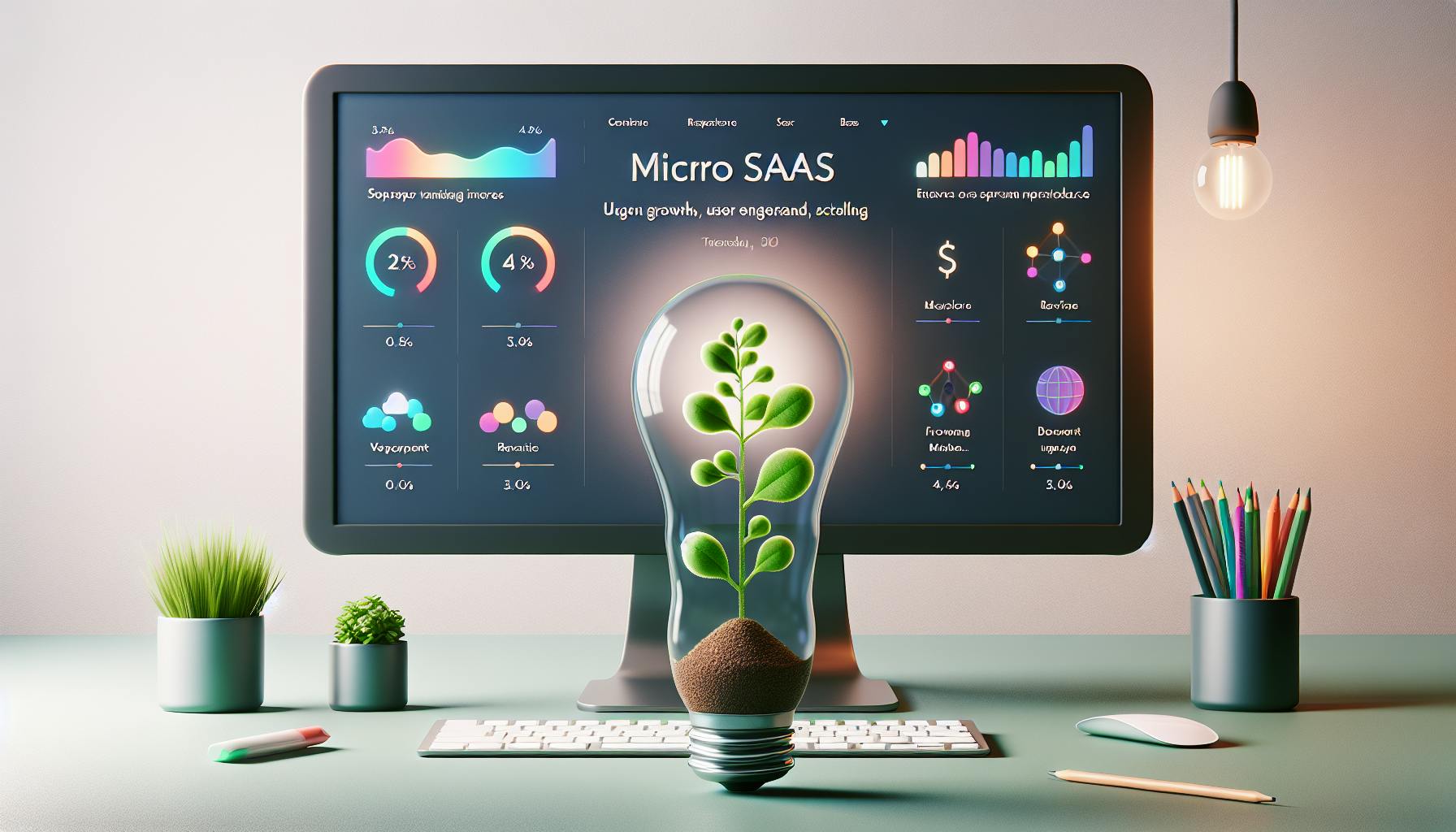API integration connects your online marketplace with third-party services like payment gateways, shipping providers, and inventory management systems. It offers several key benefits:
Enhanced Functionality
- Offer additional features without in-house development:
- Payment processing
- Shipping calculations
- Inventory management
Improved User Experience
- Automate tasks and provide real-time updates for a seamless experience
Increased Efficiency
- Reduce manual errors and human intervention, boosting productivity
Related video from YouTube
Key Integration Areas
| Area | Description |
|---|---|
| Payment Processing | Integrate with payment gateways like Stripe, PayPal, and Square for secure and efficient payment processing. |
| Shipping and Delivery | Integrate with shipping carriers like FedEx, DHL, and UPS for real-time shipping rates, package tracking, and inventory management. |
| Inventory Management | Integrate with systems like Zoho Inventory, Fulfil.io, and SkuVault for automated inventory tracking and reducing overselling. |
| CRM | Integrate with CRMs like Salesforce, Marketo, and Creatio for analyzing customer behavior and providing personalized experiences. |
| Analytics and Reporting | Integrate with tools like Google Analytics, Firebase, and Amplitude for tracking user behavior, conversion rates, and performance metrics. |
To ensure successful API integration, follow best practices:
- Plan and document your strategy
- Choose the right approach (in-house development or third-party solutions)
- Use secure and scalable tools
- Monitor and test regularly
Stay updated on emerging trends like microservices, serverless architectures, AI, machine learning, IoT, and API gateways to optimize your integration strategy. Treat API integration as an ongoing process, continuously monitoring, testing, and maintaining your integrations for optimal performance and security.
Understanding APIs
What are APIs?
APIs (Application Programming Interfaces) are sets of rules that allow different software programs to communicate and share data with each other. They act as middlemen, enabling applications to access information or services from other systems without knowing the underlying details.
Types of APIs
There are several kinds of APIs, each designed for specific purposes:
REST APIs: These are the most common web APIs. They use standard HTTP methods (GET, POST, PUT, DELETE) to interact with resources identified by URLs. REST APIs are lightweight and easy to understand, making them popular for building web services and integrating applications.
SOAP APIs: Based on XML, SOAP APIs use a formal messaging protocol. They are often used in enterprise environments and are known for strong security features and support for complex data structures.
GraphQL APIs: GraphQL allows clients to request exactly the data they need in a single query, reducing over-fetching and under-fetching issues.
WebSocket APIs: These enable real-time, two-way communication between clients and servers over a single, long-lived connection. They are useful for applications that require low-latency updates, such as real-time messaging or gaming.
API Integration Basics
API integration is the process of connecting different software applications or systems through APIs, allowing them to share data and functionality. By integrating with third-party APIs, businesses can enhance their products or services with additional features without developing them from scratch.
API integration promotes interoperability, scalability, and efficiency. It allows businesses to leverage the strengths of different platforms and services, creating a seamless experience for their users.
Common Integration Patterns
Several patterns are commonly used in API integration:
Point-to-Point Integration: Each application is directly connected to every other application it needs to communicate with. Simple for small-scale integrations, but can become complex as the number of applications grows.
Hub-and-Spoke Integration: A central hub (or integration platform) acts as a mediator, connecting multiple applications (spokes) to each other. The hub handles data transformation, routing, and protocol translation, simplifying the integration process.
Hybrid Integration: This pattern combines elements of point-to-point and hub-and-spoke integration, allowing for a mix of direct connections and centralized integration through a hub. It provides flexibility and can be tailored to specific integration requirements.
Preparing for Integration
Assess Your Needs
Before starting API integration, evaluate what your marketplace needs. Ask yourself:
- What issues can API integration solve?
- What key features do you need from API integration?
- What potential risks or challenges might you face?
Answering these questions helps determine the scope and ensures you integrate the right APIs to meet your business goals.
Identify Integration Partners
API integration involves partnering with third-party providers. Common partners include:
- Payment gateways (e.g., PayPal, Stripe)
- Shipping carriers (e.g., USPS, FedEx)
- Inventory management systems (e.g., TradeGecko, Zoho Inventory)
- CRM systems (e.g., Salesforce, HubSpot)
When selecting partners, consider:
| Factor | Description |
|---|---|
| API Documentation | Clear documentation, code samples, and support |
| Complexity and Cost | Integration difficulty and associated costs |
| Scalability and Reliability | Ability to handle growth and uptime |
| Security and Compliance | Data protection and regulatory requirements |
Evaluate API Documentation
API documentation explains how to integrate with the API. Look for:
- Clear and concise explanations
- Code samples and tutorials
- API endpoint details and parameters
- Error handling and troubleshooting guides
- Versioning and deprecation policies
Develop an Integration Plan
A comprehensive plan is crucial for successful API integration. Your plan should include:
1. Integration Scope and Objectives
Clearly define what you want to achieve and the features you need.
2. Technical Requirements and Architecture
Outline the technical specifications, systems, and infrastructure needed.
3. Development Timeline and Milestones
Set realistic deadlines and track progress with milestones.
4. Testing and Quality Assurance Strategy
Establish processes for testing and ensuring the integration meets quality standards.
5. Deployment and Maintenance Plan
Outline how you will deploy and maintain the integration over time.
Integration Approaches
When integrating your marketplace with APIs, you have two main options: developing the integration in-house or using third-party solutions. Here's a comparison:
| Approach | Advantages | Drawbacks |
|---|---|---|
| In-house Development | Full control over customization and data security | Higher costs, longer development time |
| Third-party Solutions | Faster implementation, reduced overhead costs | Less control, dependency on provider |
While in-house development gives you complete control and customization, it comes at a higher cost and takes longer to develop. Third-party solutions, on the other hand, allow for faster implementation and reduced overhead, but you'll have less control and may depend on the provider.
Integration Tools and Platforms
Several tools and platforms are available to help with API integration. Some popular options include:
- Zapier: Connects different apps and services for automation
- MuleSoft: Integrates APIs, applications, and data sources
- Jitterbit: Low-code platform for connecting APIs, apps, and data
- Boomi: Cloud-based platform for integrating APIs, apps, and data
When choosing an integration tool or platform, consider factors like ease of use, scalability, security, and support.
Best Practices
To ensure successful API integration, follow these best practices:
- Plan and document your strategy: Clearly define your integration goals, technical requirements, and development timeline.
- Choose the right approach: Select the approach that best fits your business needs, considering cost, time, and control.
- Use secure and scalable tools: Select tools and platforms that prioritize security and scalability for reliable and efficient integration.
- Monitor and test regularly: Regularly monitor and test your integration to ensure it meets your needs and identify areas for improvement.
sbb-itb-8201525
Key Integration Areas
In a marketplace, several key areas require integration to ensure smooth operations and provide a seamless user experience.
Payment Processing Integration
Integrating with payment gateways like Stripe, PayPal, and Square enables secure and efficient payment processing for users. Here's a comparison:
| Payment Gateway | Fees | Advantages | Drawbacks |
|---|---|---|---|
| Stripe | 2.9% + 30¢ | Easy integration, global reach | Higher fees for international transactions |
| PayPal | 2.9% + 30¢ | Widely accepted, additional features | Account holds, higher fees |
| Square | 2.6% + 10¢ | Transparent pricing, mobile-friendly | Limited international support |
Shipping and Delivery Integration
Integrating with shipping carriers like FedEx, DHL, and UPS enables real-time shipping rates, package tracking, and inventory management. This integration helps reduce shipping costs and improve customer satisfaction.
Inventory Management Integration
Integrating with inventory management systems like Zoho Inventory, Fulfil.io, and SkuVault enables automated inventory tracking, reducing errors and overselling. This improves operational efficiency.
Customer Relationship Management (CRM) Integration
Integrating with CRM systems like Salesforce, Marketo, and Creatio enables analyzing customer behavior, identifying trends, and providing personalized experiences. This improves customer engagement.
Analytics and Reporting Integration
Integrating with analytics tools like Google Analytics, Firebase, and Amplitude enables tracking user behavior, conversion rates, and performance metrics. This data-driven approach helps optimize operations.
Testing and Monitoring
Why Testing Matters
Testing is vital to ensure API integrations work properly. It helps find and fix errors, bugs, and security issues that could lead to data breaches, system crashes, or lost revenue. Thorough testing also allows developers to optimize API performance, improve user experience, and reduce maintenance costs.
Testing Approaches
There are different ways to test API integrations:
- Unit testing: Testing individual API components to ensure they function correctly.
- Integration testing: Testing how different API components work together and with external systems.
- End-to-end testing: Testing the entire API integration from start to finish to ensure it meets requirements.
Monitoring API Performance
Monitoring API performance is key to meeting user expectations and business needs. This involves tracking metrics like response times, error rates, and throughput. Monitoring tools can identify performance bottlenecks, detect security threats, and optimize API performance.
Tools for Testing and Monitoring
Here are some tools for testing and monitoring API integrations:
| Tool | Description |
|---|---|
| Postman | Tool for API testing and monitoring |
| JMeter | Tool for performance testing and monitoring |
| API Gateway | Tool for API management and monitoring |
| New Relic | Tool for application performance monitoring |
| Datadog | Tool for monitoring and analytics |
These tools help developers and testers find and fix errors, optimize API performance, and ensure reliable and efficient API integrations.
Security Considerations
When integrating APIs, security is a top priority. APIs can be vulnerable to attacks, data breaches, and unauthorized access, which can lead to serious issues. Here, we'll discuss critical security measures to protect the integrity and confidentiality of your API integrations.
Authentication and Authorization
Authentication and authorization ensure that only authorized parties can access your API. Common mechanisms include:
- OAuth 2.0: A widely used framework that provides robust authentication for applications and users.
- API keys: Simple yet effective, API keys can be used for client authentication. Ensure they're adequately protected, rotated, and not exposed in client-side code.
- JSON Web Tokens (JWT): A compact way to represent claims between two parties. JWTs encode claims in a JSON object, which is then digitally signed using JSON Web Signature (JWS).
Data Encryption and Secure Communication
Data encryption and secure communication protocols protect sensitive data in transit. HTTPS (Hypertext Transfer Protocol Secure) is essential for encrypting data between the client and server. Additionally, consider implementing Transport Layer Security (TLS), which provides end-to-end encryption for data in transit.
API Security Best Practices
To ensure API security, follow these practices:
- Validate and sanitize input data: Prevent injection attacks by validating and sanitizing input data.
- Implement rate limiting: Control the number of requests to prevent abuse and misuse of your API.
- Use secure communication protocols: Always use HTTPS and TLS to encrypt data in transit.
- Monitor API performance and security: Regularly monitor API performance and security to detect potential threats.
Compliance and Regulations
Compliance with industry standards and regulations is crucial for maintaining trust and avoiding legal issues. Familiarize yourself with regulations like GDPR, CCPA, and HIPAA, and ensure your API integrations comply with these standards.
| Regulation | Description |
|---|---|
| GDPR | The General Data Protection Regulation (GDPR) is a European Union (EU) law that regulates data protection and privacy for individuals within the EU and the European Economic Area (EEA). |
| CCPA | The California Consumer Privacy Act (CCPA) is a state law that enhances privacy rights and consumer protection for residents of California, United States. |
| HIPAA | The Health Insurance Portability and Accountability Act (HIPAA) is a federal law that sets standards for protecting sensitive patient health information in the United States. |
Maintenance and Updates
API integrations require ongoing care and updates to ensure smooth operation and adapt to changing needs. This section will guide you on handling API changes, versioning, and continuous integration and deployment (CI/CD).
Handling API Changes
API changes can be tricky to manage, especially when multiple integrations are involved. To handle API changes effectively:
- Notify users: Give users plenty of notice before removing an API version. Use email, in-app notifications, or a banner on the API documentation page.
- Offer migration guides: Provide clear guides explaining how to move to the new API version.
- Provide support: Offer help to users struggling to migrate to the new API version.
- Monitor usage: Keep an eye on usage patterns of the API version being removed to ensure users are successfully moving to the new version.
Versioning and Deprecation
API versioning and deprecation are key for maintaining backward compatibility and ensuring smooth transitions. Strategies include:
- Semantic versioning: Use semantic versioning to manage versions effectively.
- Backward compatibility: Ensure new API versions are backward compatible to prevent disruptions.
- Deprecation schedules: Set schedules for removing older API versions, giving clients enough notice to migrate.
Continuous Integration and Deployment
Continuous integration and deployment (CI/CD) practices ensure seamless API integrations by automating testing, deployment, and monitoring. Benefits include:
| Benefit | Description |
|---|---|
| Faster time-to-market | CI/CD enables faster deployment of new features and updates. |
| Improved quality | Automated testing and monitoring ensure higher quality integrations. |
| Reduced errors | CI/CD minimizes errors and downtime, resulting in improved performance. |
Future Trends and Emerging Tech
Microservices and Serverless
More businesses are breaking down large applications into smaller, independent services called microservices. This approach offers greater flexibility and scalability. Serverless architectures allow developers to focus solely on writing code without managing infrastructure. Expect to see more microservices and serverless adoption to improve API integration capabilities.
API Gateways and Management
As API usage grows, businesses need robust API gateways and management platforms. These provide a single entry point for API traffic, enabling features like security, rate limiting, and analytics. Demand for API gateways and management tools will continue rising.
AI and Machine Learning
Artificial intelligence (AI) and machine learning (ML) are transforming API integration:
- AI-powered tools can analyze API usage patterns, detect anomalies, and predict future demand, helping optimize API strategies.
- ML algorithms can improve API security by detecting and preventing attacks.
IoT and API Integration
The Internet of Things (IoT) generates vast data volumes. APIs play a critical role in connecting IoT devices and enabling seamless data exchange. As the IoT ecosystem grows, demand will increase for APIs that can handle large data volumes and provide real-time insights. Businesses that effectively integrate IoT devices with their APIs will capitalize on IoT opportunities.
| Trend | Description |
|---|---|
| Microservices and Serverless | Breaking down applications into smaller, independent services for flexibility and scalability. Serverless architectures allow focusing on code without infrastructure management. |
| API Gateways and Management | Platforms providing a single entry point for API traffic, enabling security, rate limiting, and analytics. |
| AI and Machine Learning | AI-powered tools analyze API usage patterns, detect anomalies, and predict demand. ML algorithms improve API security. |
| IoT and API Integration | APIs connect IoT devices and enable data exchange. Demand will rise for APIs handling large data volumes and real-time insights. |
Conclusion
API integration is essential for building a successful online marketplace. By understanding its importance, preparing properly, and following best practices, you can unlock your marketplace's full potential and provide a seamless experience for customers.
As the digital landscape evolves, staying updated on the latest API integration trends and emerging technologies is crucial. From microservices and serverless architectures to AI, machine learning, IoT, and API gateways, numerous opportunities exist to improve and optimize your API integration strategy.
Remember, API integration is an ongoing process that requires continuous monitoring, testing, and maintenance. By following the guidelines and best practices outlined in this article, you can ensure your API integration is secure, scalable, and efficient, ultimately driving your online marketplace's success.
Stay ahead of the curve and explore further resources to deepen your knowledge of API integration. With the right approach and tools, you can unlock your marketplace's full potential and achieve long-term success.
Key Takeaways
- API integration connects your marketplace with third-party services, enabling features like payment processing, shipping, and inventory management.
- Prepare for integration by assessing your needs, identifying partners, evaluating documentation, and developing a comprehensive plan.
- Choose the right integration approach: in-house development or third-party solutions, based on your requirements and resources.
- Follow best practices, such as using secure and scalable tools, monitoring and testing regularly, and adhering to security and compliance standards.
- Stay updated on emerging trends like microservices, serverless architectures, AI, machine learning, IoT, and API gateways to optimize your integration strategy.
- Treat API integration as an ongoing process, continuously monitoring, testing, and maintaining your integrations for optimal performance and security.
| Benefit | Description |
|---|---|
| Enhanced Features | Offer additional services like payment processing, shipping, and inventory management without in-house development. |
| Improved User Experience | Automate tasks and provide real-time updates for a smooth and efficient experience. |
| Increased Efficiency | Reduce manual errors and human intervention, boosting productivity. |
| Scalability and Flexibility | Adapt to changing needs and integrate new technologies as they emerge. |
| Cost Savings | Leverage third-party services instead of developing in-house, reducing development and maintenance costs. |


